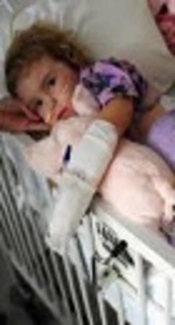Dear Editor,
Burn injury is one of the most important injuries to children (1). Severe burns can cause complications and mortality in children and are the most common cause of death related to injury in children (2). Burn injuries, compared to other physical injuries of children, require special care, long-term hospital admissions, and various treatments (3). Rafiee and colleagues concluded in their study that burns are one of the most important health threats in children and require fundamental planning (4).
Collecting epidemiologic data on patients with burn injuries can provide important information for designing appropriate strategies to reduce the prevalence of injuries and implement appropriate treatment managerial methods (5). The aim of this study was to evaluate the demographic status and causes of burns in children who passed away in the Sina Educational Center, Tabriz, Iran, during a 5year period, 2011 - 2016.
In a cross-sectional descriptive study, at the Sina Educational Center, Tabriz, Iran, during a 5-year period, 2011 - 2016, the following information were collected: age, sex, the cause of burn injury, the location of burn injury, burn severity and percentage, Baux index, and duration of hospitalization. The inclusion criteria included all children under the age of 12 who were admitted to the burn and intensive care unit (ICU) wards of Sina Educational/Medical Center, Tabriz. The exclusion criteria included individuals over the age of 12 and incomplete medical records. This study was approved by Tabriz Islamic Azad University. Collected data was input into the SPSS 17.0 software. The normal distribution of data was checked using Kolmogorov-Smirnov test. Descriptive tests were used to describe the data.
In this study, the frequency of in-hospital mortality of children with burns during 5 years was 3.1% (94/3037 patients), 69.1% male (n = 65). The location of burn accident in deceased patients was at home in 79.8% of children and out of the home in the remaining 20.2%. The frequency of burn causes in deceased patients was 55.3% hot liquids, 42.6% fire, 1.1% hot food, and 1.1% acid/alkali. In terms of severity of burn injuries, 6.4% were grade 2 superficial, 89.4% were grade 2 deep, and 4.3% were grade 3. A total of 93.6% of these children (n = 88) were admitted to the ICU. In terms of location of burn in the 94 deceased patients, the majority of cases had multiple region involvements; the upper limbs in 95.7%, the lower limbs in 88.3%, trunk in 83.0%, the head and neck in7 5.5%, as well as the perineum were burned in 23.4% of these patients. Table 1 describes the patients’ quantitative variables.
| Variables | First Quartile | Median | Third Quartile |
|---|---|---|---|
| Age | 2 | 3 | 5.25 |
| Percent of burning | 33 | 45 | 55 |
| Baux score | 36.75 | 49 | 60.25 |
| Admission duration | 4 | 8 | 15 |
Patients’ Quantitative Variables
Owing to the progress in the medical care of burnt patients and preventive measures, the mortality has decreased, while children are at increased risk of death from burns with a global rate of 3.9 deaths per 100000 population. Among the world’s population, children under the age of 1 year old have the highest rate of death from burns (6).
In our study, the prevalence of 5-year mortality rate in patients was 3.1% and the median age of patients was 3 years. In other studies, the mortality rate was 5.5% (4), 4% (7), and 7.1% (8). Burns with hot liquids, inhalation injuries, and burns of more than 36% were identified as risk factors for mortality of children below the age of 6 with burns in developing countries (9). In our study, 84.0% of deceased patients were under the age of 6 and burns with hot liquids were the most frequent cause of burn.
Implementing various preventive educational programs for parents and children at home, school, work environment, public media, and social networks, along with first aid methods, proper use of equipment and home safety precautions, changes in cooking methods, and thermal devices such as samovars, kettles, and stoves, standardization of thermal equipment such as heater, and stove, and avoiding the use of fast-fire clothing, are effective measures in reducing the chance of burns in the community. With the above-mentioned hints and better identification of risk factors and burn-related factors, we can help reduce the physical and social burden of burns.
